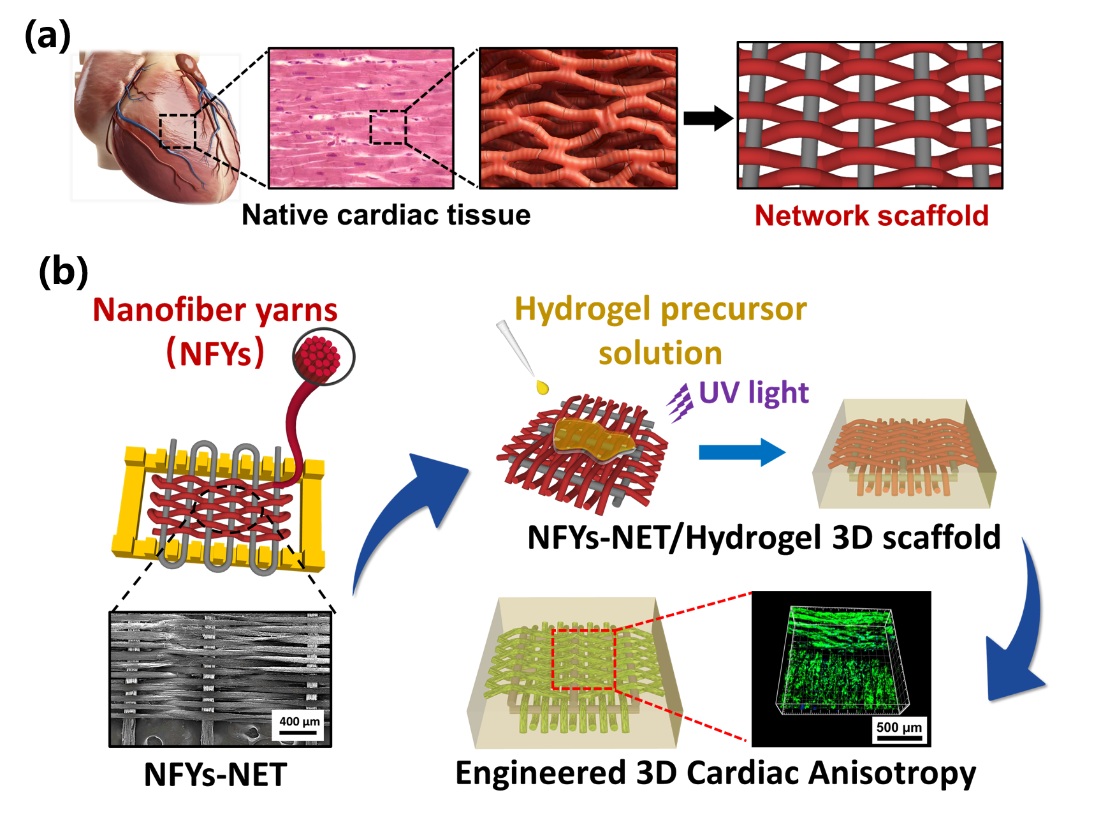Whether in developed or developing countries, heart disease remains one of the highest mortality rates. The development of tissue engineering and regenerative medicine provides a new approach and method for the treatment of heart disease. Using tissue engineering techniques to prepare engineered cardiac patches for myocardial injury repair, or to develop micro-myocardial tissue for testing the efficacy of drugs for heart disease, and even to reconstruct a functional and well-structured engineered heart organ to treat heart disease in vitro It has become an important target and frontier field of cardiac tissue engineering research. However, how to prepare tissue engineering scaffold materials that simulate the three-dimensional staggered arrangement and mechanical anisotropy structure of natural myocardial tissue is still a hotspot and a difficult point in research.

Recently, Guo Baolin, a research group of the Center for Bioengineering and Regenerative Medicine of the Frontier Institute, used a combination of conductive nanofiber bundles and photocurable hydrogels to prepare a composite 3D tissue engineering scaffold for the construction of engineered 3D myocardial tissue. In this study, dry-wet electrospinning technology was used to prepare oriented electrospinning electrospinning nanofiber bundles, which were woven into a staggered network structure similar to natural myocardial tissue, and multi-layer electrospinning nanofiber bundles were hydrogels. The network package forms a 3D composite support. The results show that the electrospinning nanofiber bundle network-hydrogel composite scaffold can effectively promote the 3D orientation growth and maturation of cardiomyocytes, and the nanofiber bundle network of each layer can control the growth and arrangement of the cardiomyocytes alone. The encapsulated hydrogel not only provides a suitable 3D environment for cell growth and nutrient transport in the nanofiber bundle network, but also co-cultures cardiomyocytes with endothelial cells to demonstrate the operability of forming vascularized myocardial tissue. The composite scaffold prepared by combining the conductive nanofiber network with the photocurable hydrogel fully simulates the 3D anisotropic structure of natural myocardial tissue, demonstrating its application potential and broad prospects in the repair and regeneration of myocardial tissue.
Based on the research results, the research team's doctoral students Wu Yaobin and Wang Ling published the research paper title of "Interwoven aligned conductive nanofiber yarn/hydrogel composite scaffolds for engineered 3D cardiac anistropy" in the international nanomaterials authoritative journal ACS Nano (influence factor 13.942). Xi'an Jiaotong University is the first author of the paper and the first author of the communication.
The research work was completed under the financial support of the National Natural Science Foundation, the National Thousand Talents Program, and the Xi'an Jiaotong University Foundation.
Paper link: http://pubs.acs.org/doi/abs/10.1021/acsnano.7b01062
Professor Guo Baolin's research group is mainly engaged in the research of biomedical polymer materials, such as degradable hydrogels and degradable conductive polymer materials, preparation of degradable porous polymer scaffolds and research on controlled release systems of drugs. In recent years, he has published a series of work on the use of degradable conductive polymers to repair sensitive signals of electrical signals: ACS Nano, 2015, 9(9): 9167-9179; Biomaterials, 2017, 122, 34-47; Biomaterials, 2016, 104, 18-31; Biomaterials, 2016, 87, 18-31; Biomaterials, 2015, 71,158-167; ACS Applied Materials & Interfaces, 2016, 8(27):17138-17150; ACS Applied Materials & Interfaces, 2015, 7(51):28273-28285; ACS Applied Materials & Interfaces, 2015, 7(12):6772-6781; Acta Biomaterialia, 2016, 46, 234-244; Acta Biomaterialia 2015, 15 (26):236-248; Chemistry of Materials, 2015, 27 (16), 5668–5677; ACS Macro Letters, 2014, 3: 1145-1150.
Guo Baolin's homepage is introduced at: http://gr.xjtu.edu.cn/web/baoling

